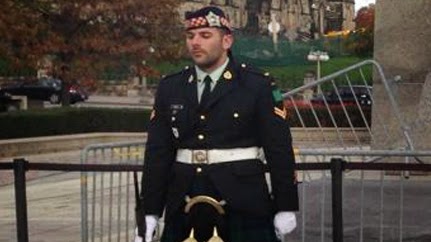
Crisis Communications 101: Overcoming Panic and Fear
As with many emergencies and crises, communications is critically important to:
1. help the management of the response itself by giving people clear information and directions
2. rapidly de-escalate the crisis, and
3. create confidence in the public that the situation is being handled credibly and coherently.
So, having established those goals, let's look at how communications was handled by police, politicians and the government in the terrible events of October 22nd?
1. Speak only on facts. This was - for the most part - accomplished under very difficult circumstances, while operating without perfect information. Given that the situation was still 'fluid' or 'active' as officials said, there were bound to be contradictory information and a certain level of confusion. This was particularly true in this crisis regarding the possibility of another gunman. The gravest error - under great pressure to reassure - would have been to give false assurances that there wasn't another gunman. The simple fact is that the security and police forces couldn't rule out that possibility. As a result, the security perimeter kept widening around Parliament Hill (where the shooter was killed) and the National War Memorial (where Cpl. Nathan Cirillo was cold-bloodedly murdered).
2. Get information out quickly - even when you don't have all the answers. The police forces began tweeting very quickly with information - as well as requests for photos and videos from the public. Although it took four hours before a news conference was held, it was reasonable in the circumstances. The news conference itself, held at RCMP Headquarters, didn't provide much new information and the response to it by journalists and the public (as evidenced by social media) was one of disappointment. So, either they needed to wait until they had something more solid, or perhaps go earlier with a quick update. However, they would no doubt have been equally criticized in either of those scenarios too. All in all, it demonstrated coherent action among the RCMP, Ottawa Police, the Canadian Forces and the Mayor of Ottawa - was the best they could do in the circumstances.
 |
| A somber PM addresses the nation |
4. Communicate action that people need to take without invoking 'panic'. This, the RCMP and Ottawa Police did superbly well. Their orders to 'shelter in place' for those in downtown offices and for the rest of the public to stay away were respected and followed. [I was downtown in my car a block away on Queen St. in the first hour, and the sense of order was already apparent].
5. Manage public perceptions and expectations. This was done very well, overall. The perception of professionalism and purposeful response was evident from the beginning of the crisis. They didn't fall into the trap of 'over-promising and under-delivering' on expectations. Instead, the RCMP, Ottawa Police and Canadian Forces managed and fine-tuned our expectations well, and as the afternoon wore on, you could feel the relief start to take hold. By early evening, as with many of our neighbours, people emerged from their homes to walk their dogs, get some air, and try to feel 'normal' again.
 |
| Cpl. Cirillo minutes before on duty, R.I.P. |
 |
| A true hero, Sgt-at-Arms Kevin Vickers |
Follow Barry on twitter.com/mclomedia or subscribe to this blog 'Communicate with Power®' by emailing mclomedia@msn.com.


No comments:
Post a Comment